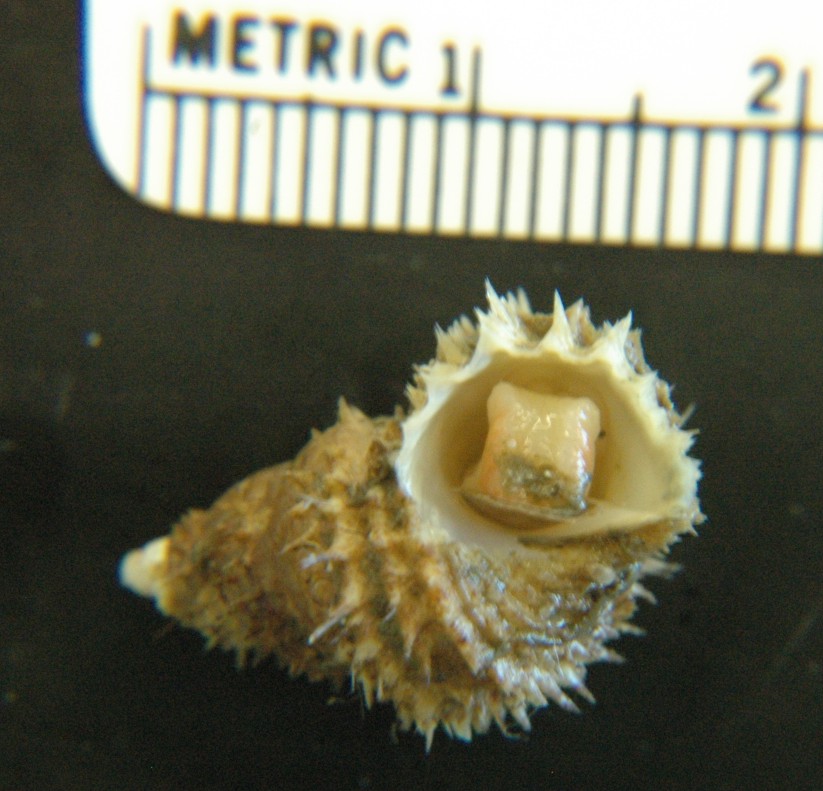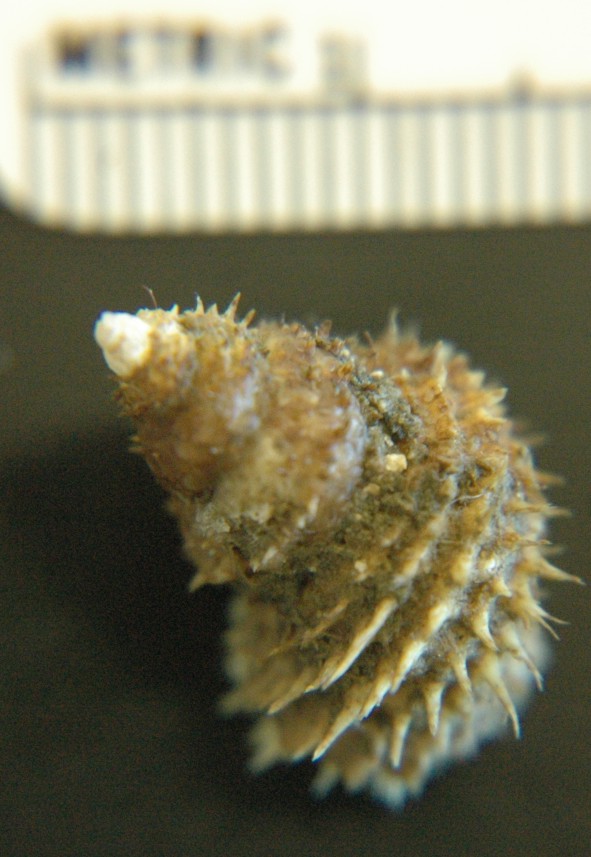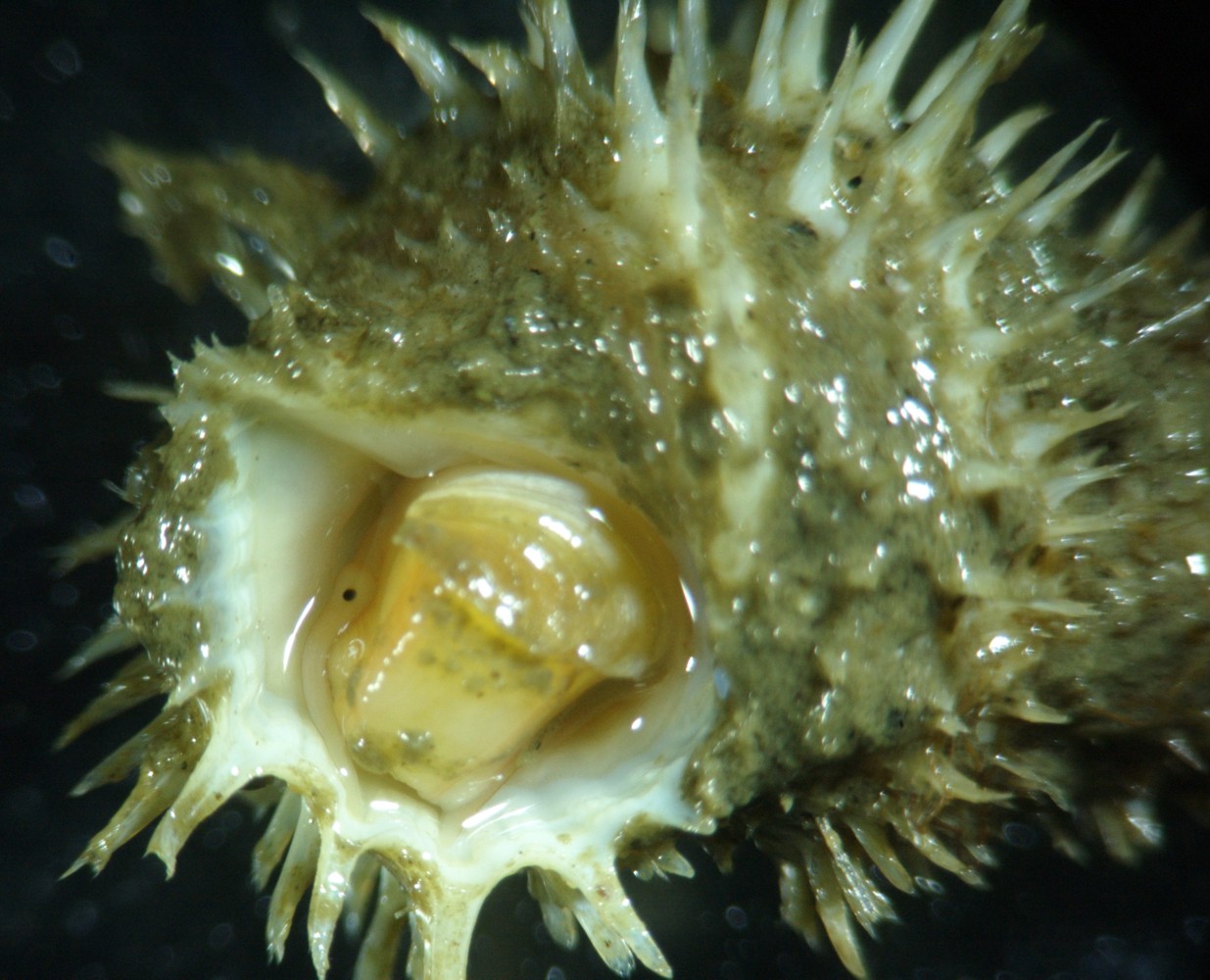How to Distinguish from Similar Species: Several other Trichotropis species have an aperture at least half the height of the shell. May look like a small Oregon triton Fusitriton oregonensis, but the aperture is more circular in Trichotropis.
Geographical Range: Bering Sea to Oregon
Depth Range: Extreme low intertidal to 200 m. Mostly subtidal
Habitat: Areas of strong currents and little mud. Often under subtidal rocks, among tunicates and tubeworms. May climb up the tubes of large tubeworms.
Biology/Natural History: This species is a filter feeder. It traps microscopic particles in mucus, which it then swallows. Since its food comes from suspended particles it has no need to move around much. It mounts a stone or other object out of the mud and remains there for a long time. Deep-water individuals frequently have the tiny white parasitic snail Odostomia columbiana next to the aperture. Odostomia uses its eversible proboscis to suck body juices from Trichotropis. Trichotropis also often has ascidians, hydroids, diatoms, sponges, barnacles, or other sessile animals growing on it. This species is a protandric hermaphrodite. For its first year it is a male, then becomes female but retains the penis (behind its right eye). Females lay disk-shaped egg capsules at night, then die.
Cancellate means checkered. The spiral and
longitudinal ridges
form a checkered pattern on the shell, but the pattern is often hard to
see because of the thick hairy periostracum.
| Return to: | |||
| Main Page | Alphabetic Index | Systematic Index | Glossary |
References:
Dichotomous Keys:Flora and Fairbanks, 1966 (with incorrect illustration)
Kozloff 1987, 1996
General References:
Griffith, 1967
Harbo, 1997
Johnson and Snook, 1955
Kozloff, 1993
Morris, 1966
O'Clair and O'Clair, 1998
Rice, 1973
Ricketts et al., 1985
White, 1976
Scientific
Articles:
Yonge, C.M.,
1962. On the biology of the
mesogastropod Trichotropus
cancellata
Hinds, a benthic indicator species. Biological Bulletin 122:
160-181
Web sites:
General Notes and
Observations: Locations,
abundances, unusual behaviors:

The species has a horny operculum.
The foot is pink. The aperture
is less than half the height of the shell and has no siphonal
notch but the anterior end of the aperture
(the right side in the photo above) is angled like a spout.
Another view of the snail pushing back its operculum and looking out the aperture. Photo by Dave Cowles, August 2012
Authors and Editors of Page:
Dave Cowles (2007): Created original page
CSS coding for page developed by Jonathan Cowles (2007)

